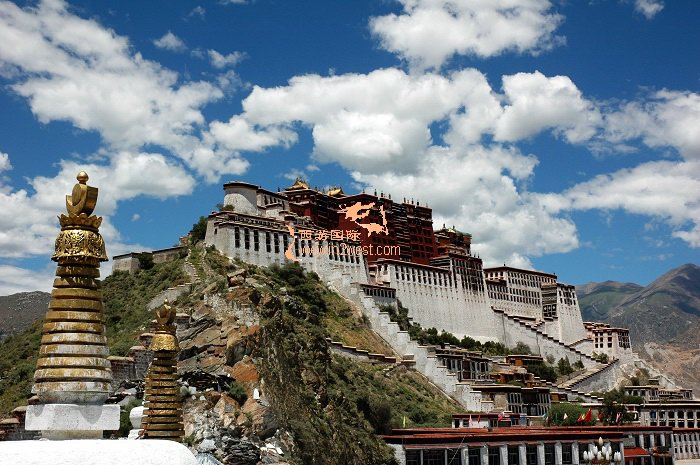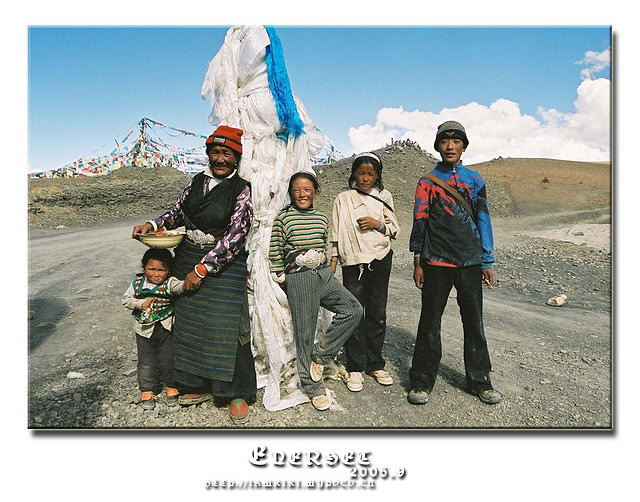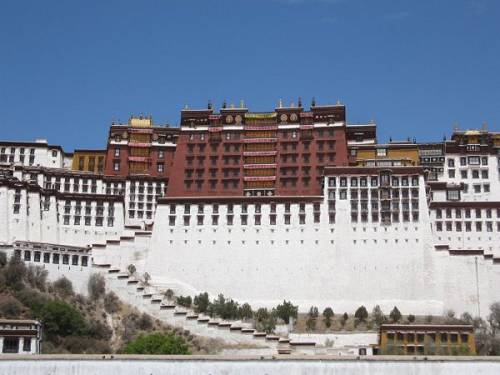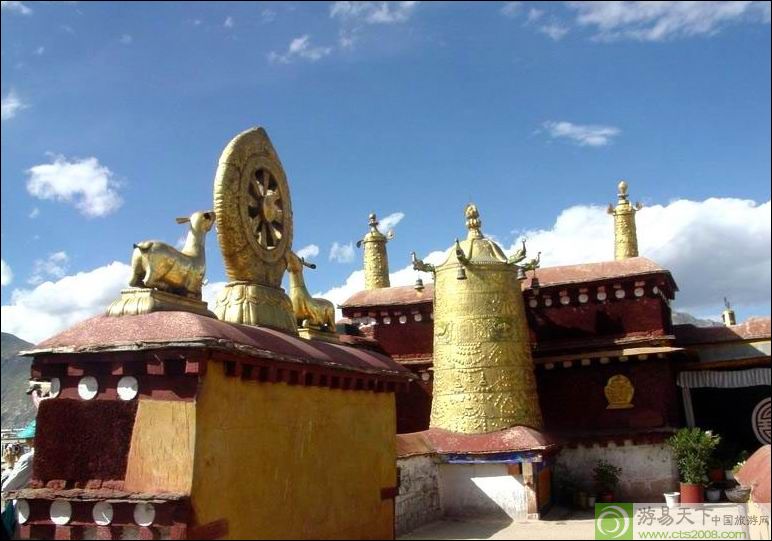『Tibet』
Situated in southwest China, Tibet
Autonomous Region is also called “Zang” for short. The region covers
1.2 million squarekilometers and has a population of 262 million,which includes Tibetan, Han Monba, Naxi, Lhoba and Hui. The capital is Lhasa.

Being the main body of the Qinghai-Tibet Plateau, Tibet at an average
elevation of over 4,000 meters in reputed as “the Roof of the World”.
Loftly mountains –Tanggula in the north, the Hilalayas in the south,
Hengduan in the east, Kunlun in the west and Nyainqentanglha and
Gangdise in the center –form the unique topography of Tibet with their
astonishing heights. The land of snows is crisscrossed by rivers.
The Yarlung Zangbo, the mightiest river of Tibet, cutting a foamy,
ferocious 2,091 kilometers course eastward in the southern part of
Tibetan plateau, is regarded as “the cradle of Tibet” or “the mother
river” by locals. ensconced in tall mountains and scattered on the vast
land are also 1,500 lakes with a total area of more than 24,000 square
kilometers or one third of the total area of lakes in China.
Besides the spectacular sceneries, the long history and unique religious
culture have bestowed Tibet colourful folklore and customs and numerous
culture relics. Tibet possesses more than 2700 temples among which the
Potola Palace, Jokhong Monastery and the Norbulinka are on the list
of World Heritage by UNESCO. Main tourist cities are Lhasa, Xigaze and
Gyangze.
Lhasa |
Lhasa is an old town with a
history about 1,300 years and first became the capital of tibet in the
7th century, from then on it remained as the capital during the
following centuries. “lhasa” means “sacred place” or “buddha’s land” in
Tibetan language for the reason of the buddhism faith of its people and
many monasteries in the town. In Tibetan people’s mind, Lhasa is the
“mecca” in theirs soul. Almost every on dreams to have a day to visit
this sacred place. before 1949, Lhasa was a small town with a population
less than 30,000, but today it has grown into a sizable city with
120,000 people.

Climate in summer is one of the
mildest in the world, no fear of heat or coldness. During the raining
season it usually rains at night, but daytime is always fresh and sunny.
In winter, the night is very cold, the temperature could drop as low as
30 degrees below zero. But the daytime is still mild, temperature could
rise back to 15 degrees above zero. the altitude of lhasa is 3,667
meters above sea level.
Potala Palace |
Potala Palace, the palace of Dalai Lama, first built in 7th century by King Songtsan Gampo to celebrate his marriage to princess wencheng of the Tang dynasty and the nepalese princess, rebuilt by 5th dalai lama in the 17th century. Sitting on the top of Red Mountain in Lhasa, the palace consists of thirteen stories, has 1,000 rooms and is divided into two sections, the Red Palaces and the White Palaces. It is about 120 meters in height and 360 in width and takes up an area of 90,000 square meters. It is the quintessence of ancient Tibetan architecture and a treasury of Tibetan culture and arts.

Many precious cultural relics such as sutras, images of buddha, Thangkas, are kept in the palace. in1994, UNESCO inscribed it on the list of world heritage.
Drepung Temple |
Drepung, built in 1416 by Jamyang Chkoje –a disciple of Tsongkapa is the largest monastery in Tibet, with a holding capacity about 10,000 at one time. The main relics:1) image of maitreya (the future buddha), which is said to be so passionate and vivid that only seeing the buddha could release one’s suffering: 2) white conch shell, which is said to be dug out from the underground of the temple during the construction by Tsongkapa.3) the funerary stupas of the 2nd, 3rd and 4th Dalai Lamas.

Lhasa |
1
Lhasa |
1
Lhasa |
1
Lhasa |
